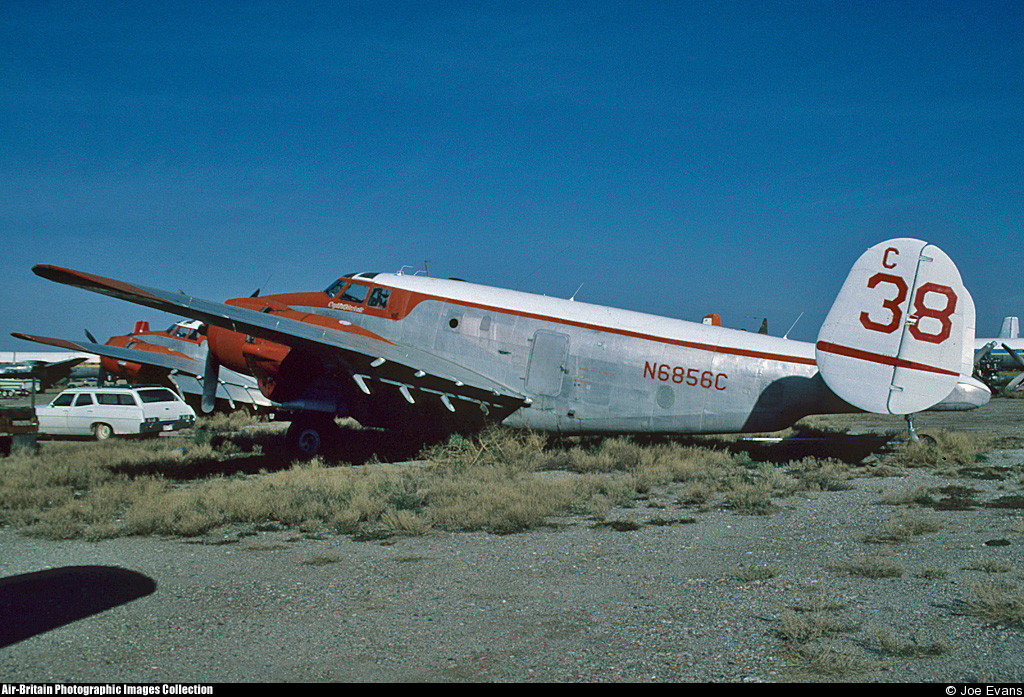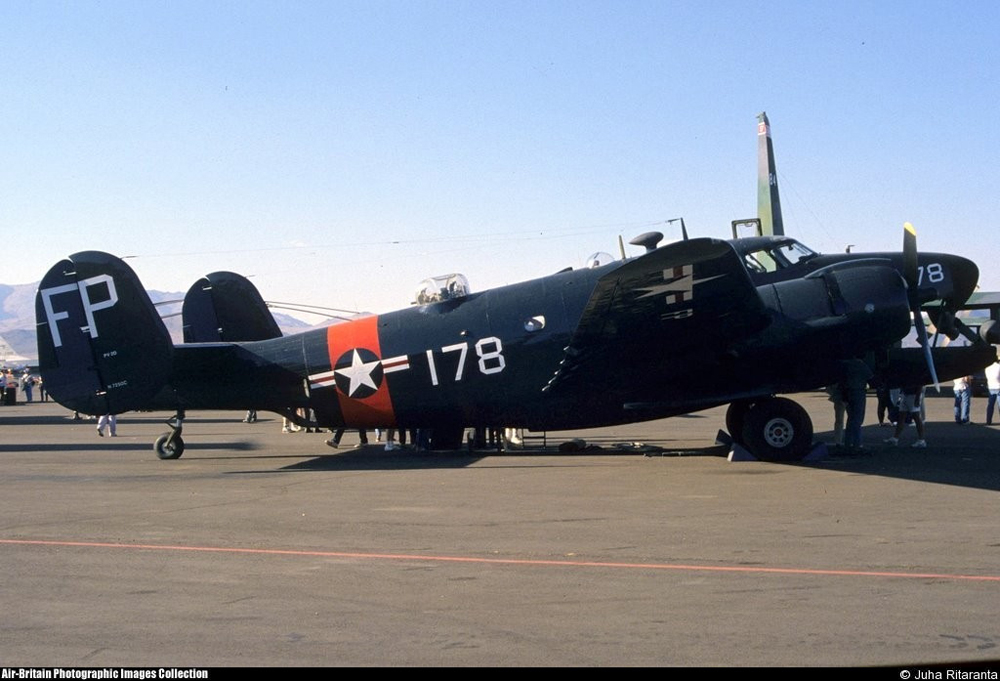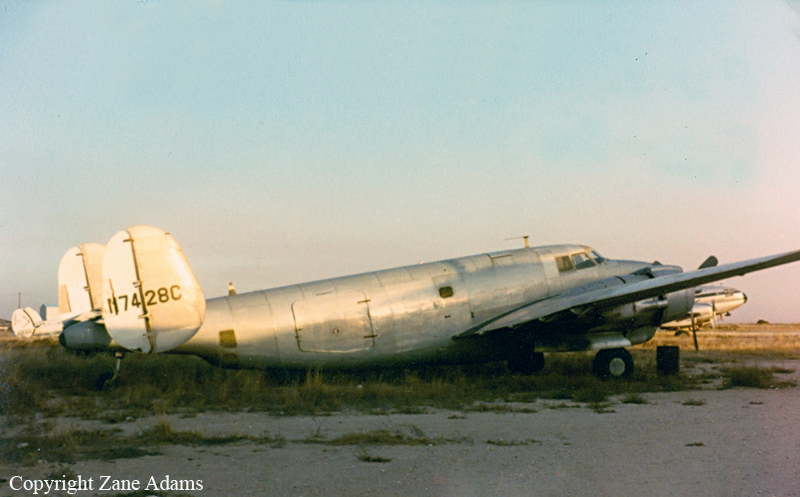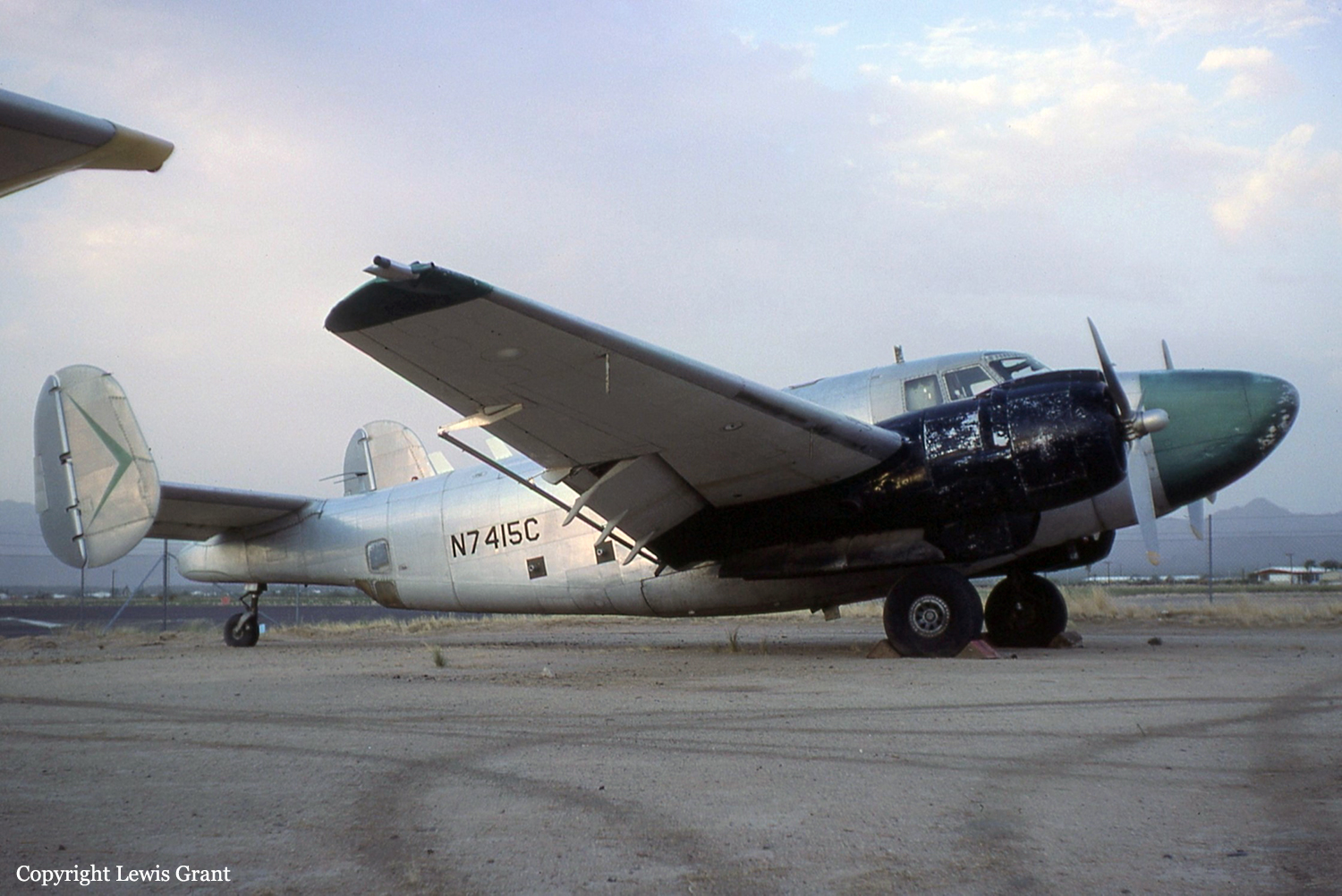Country
Crash of a Lockheed PV-2 Harpoon in Blandburg: 2 killed
Date & Time:
Apr 20, 1997 at 1437 LT
Registration:
N6856C
Survivors:
No
Schedule:
Philipsburg - Philipsburg
MSN:
15-1156
YOM:
1944
Flight number:
Tanker 38
Crew on board:
2
Crew fatalities:
Pax on board:
0
Pax fatalities:
Other fatalities:
Total fatalities:
2
Captain / Total hours on type:
170.00
Aircraft flight hours:
3497
Circumstances:
The pilot/owner of an air tanker was dispatched to drop a load of retardant on a fire burning up a valley wall. The pilot made radio contact with the firefighters on the ground, who requested that the pilot deliver the entire load on the first drop. A helicopter pilot who was dropping water on the fire positioned himself about a mile away to allow the air tanker to make its drop. The winds were from the northwest at 15 knots and gusting to 20 knots, and the helicopter pilot reported turbulence in the area. The helicopter pilot watched as the air tanker came from the northeast, overflew the fire, and made a descending counterclockwise turn. The airplane flew towards the fire parallel to the valley ridge, and the helicopter pilot observed the air tanker drop its retardant. During the drop, the airplane flew through smoke, and its right wing impacted trees on the upslope side of the valley. The airplane then rolled 90 degrees and descended into the steeply inclined wooded terrain. A review of the pilot's FAA medical records revealed that he lacked color vision.
Probable cause:
Pilot in command misjudged his maneuvering altitude. Factors to this accident were the mountainous terrain, windy conditions, turbulence in the area, and smoke.
Final Report:

Crash of a Lockheed PV-2D Harpoon off Lakeport: 8 killed
Date & Time:
Sep 29, 1990 at 1229 LT
Registration:
N7250C
Survivors:
No
Schedule:
Santa Rosa - Santa Rosa
MSN:
15-1605
YOM:
1945
Crew on board:
1
Crew fatalities:
Pax on board:
7
Pax fatalities:
Other fatalities:
Total fatalities:
8
Circumstances:
The airplane was observed making several low passes, with its smoke generators operating, over seaplanes anchored in a lake. The last pass was reportedly at an altitude less than 50 feet, and then the airplane was observed entering an abnormally steep climb, followed by a near vertical nose-down attitude to impact. A video tape shows that both propellers were turning. The pilot had received his multi-engine rating in a Beech 76 on 3/6/90, and his type rating in the airplane 3/28/90.
Probable cause:
The pilot-in-command's failure to maintain airspeed during a pull-up from a low pass. Factors which contributed to the accident were: the pilot's poor judgement in buzzing the seaplanes which resulted in insufficient altitude to recover from the stall, and the pilot's inexperience in the airplane.
Final Report:

Ground accident of a Lockheed P-2V Harpoon in Conroe
Date & Time:
Sep 16, 1990 at 1326 LT
Registration:
N7428C
Survivors:
Yes
Schedule:
Conroe - Lafayette
MSN:
15-1228
YOM:
1944
Crew on board:
4
Crew fatalities:
Pax on board:
0
Pax fatalities:
Other fatalities:
Total fatalities:
0
Captain / Total hours on type:
500.00
Aircraft flight hours:
1900
Circumstances:
During taxi to takeoff the crew sensed an odor similar to an electrical fire, and smoke became apparent in the cockpit. Both generators and the battery master were secured. The right generator would not accept a load and smoke was coming from the right wing accessory jbox in the right wheel well. Three occupants deplaned and initially extinguished the fire, which reignited due to hot metal and compromised fuel/oil lines. All systems were secured and the pilot then evacuated the airplane, which was consumed by the fire. The pilot estimated that fire fighting equipment did not arrive for 20-25 minutes after the fire began. Faa inspectors were unable to determine the fire source from the burned wreckage. However, the operator's report stated that the right starter solenoid did not open after engine start causing the starter to remain linked to the electrical system. This resulted in a system overload and subsequent electrical fire. Both fuel and oil lines were routed through the right wheel well for cockpit indications.
Probable cause:
The engine starter remained engaged after engine start and the electrical system overheat.
Final Report:

Crash of a Lockheed PV-2D Harpoon in Mesa
Date & Time:
May 1, 1985 at 1557 LT
Registration:
N7415C
Survivors:
Yes
Schedule:
Mesa - Mesa
MSN:
15-1608
YOM:
1945
Crew on board:
2
Crew fatalities:
Pax on board:
0
Pax fatalities:
Other fatalities:
Total fatalities:
0
Captain / Total hours on type:
220.00
Circumstances:
Following a dual engine change, the pilot test flew the aircraft. On initial climb, at about 500 feet agl, both engines began backfiring violently and lost power. According to the pilot, power sufficient for flight could not be obtained, and a forced landing was made about 0.75 miles from the airport. The landing occurred in open desert terrain and the aircraft was substantially damaged. The pilot acknowledged that he did not check the position of the control handles for the superchargers during either his preflight or pre-takeoff inspections. And the blowers had been inadvertently left set to the high blower position. According to the pilot, the checklist which he was using for the aircraft did not address the position of the blowers because for the past 15 years it had been company policy to 'wire the blowers to the low blower position.' Both occupants escaped uninjured.
Probable cause:
Occurrence #1: loss of engine power (partial) - nonmechanical
Phase of operation: takeoff - roll/run
Findings
1. (c) checklist - inaccurate - pilot in command
2. (c) powerplant controls - improper - pilot in command
----------
Occurrence #2: forced landing
Phase of operation: descent - emergency
----------
Occurrence #3: in flight collision with terrain/water
Phase of operation: landing - flare/touchdown
Findings
3. Airport facilities,runway/landing area condition - none suitable
4. Terrain condition - rough/uneven
Phase of operation: takeoff - roll/run
Findings
1. (c) checklist - inaccurate - pilot in command
2. (c) powerplant controls - improper - pilot in command
----------
Occurrence #2: forced landing
Phase of operation: descent - emergency
----------
Occurrence #3: in flight collision with terrain/water
Phase of operation: landing - flare/touchdown
Findings
3. Airport facilities,runway/landing area condition - none suitable
4. Terrain condition - rough/uneven
Final Report:

Crash of a Lockheed PV-2D Harpoon in Addison
Date & Time:
Apr 28, 1975 at 1534 LT
Registration:
N230Z
Survivors:
Yes
Schedule:
Addison - Addison
MSN:
15-1603
YOM:
1945
Crew on board:
2
Crew fatalities:
Pax on board:
0
Pax fatalities:
Other fatalities:
Total fatalities:
0
Captain / Total hours on type:
199.00
Circumstances:
Following a fire control mission, the crew was returning to Addison Airport. On final approach, a malfunction on the left engine forced the crew to feather its propeller when control was lost. The airplane banked left and crashed about 300 yards short of runway threshold. Both pilots were injured while the aircraft was destroyed.
Probable cause:
Stalled on final approach after the crew failed to follow the approved procedures and failed to maintain flying speed. The following contributing factors were reported:
- Poorly planned approach,
- The pilot feathered the left propeller due to low level engine oil, proved to be erroneous.
- Poorly planned approach,
- The pilot feathered the left propeller due to low level engine oil, proved to be erroneous.
Final Report:
Crash of a Lockheed PV-2 Harpoon near Winslow: 2 killed
Date & Time:
Jun 12, 1974 at 1357 LT
Registration:
N7263C
Survivors:
No
Schedule:
Whiteriver - Whiteriver
MSN:
15-1247
YOM:
1944
Crew on board:
2
Crew fatalities:
Pax on board:
0
Pax fatalities:
Other fatalities:
Total fatalities:
2
Captain / Total hours on type:
400.00
Circumstances:
The crew departed Whiteriver on a fire fighting mission. While flying at low height, the airplane went out of control and crashed in flames. Both crew members were killed.
Probable cause:
Loss of control after the crew failed to maintain flying speed .The following factors were reported:
- High density altitude, about 12,000 feet,
- High temperature,
- Lost control in steep bank.
- High density altitude, about 12,000 feet,
- High temperature,
- Lost control in steep bank.
Final Report:
Crash of a Lockheed PV-2 Harpoon in Vila Luso
Date & Time:
Jul 15, 1971
Registration:
4616
Survivors:
Yes
Crew on board:
0
Crew fatalities:
Pax on board:
0
Pax fatalities:
Other fatalities:
Total fatalities:
0
Circumstances:
Crashed in unknown circumstances in Vila Luso. No casualties.
Crash of a Lockheed P-2V Harpoon near Sebring
Date & Time:
May 5, 1969 at 0845 LT
Registration:
N7260C
Survivors:
Yes
Schedule:
Sebring - Sebring
MSN:
15-1420
YOM:
1944
Crew on board:
2
Crew fatalities:
Pax on board:
0
Pax fatalities:
Other fatalities:
Total fatalities:
0
Captain / Total hours on type:
1051.00
Circumstances:
The crew departed Sebring Airport for a local spraying mission. En route, the left engine failed and the crew delayed the feathering the prop. The aircraft lost height and eventually crashed near Sebring. Both pilots were seriously injured and the aircraft was destroyed by a post crash fire.
Probable cause:
The accident was the consequence of a controlled collision with ground while the crew was trying to return to his departure point. Failure of the engine structure caused by a master and connecting rods failure. The following findings were reported:
- Improper in-flight decisions on part of the crew,
- Improper emergency procedures,
- Complete engine failure due to rear master rod bearing failure,
- Pilot delayed feathering the left prop.
- Improper in-flight decisions on part of the crew,
- Improper emergency procedures,
- Complete engine failure due to rear master rod bearing failure,
- Pilot delayed feathering the left prop.
Final Report:
Crash of a Lockheed PV-2 Harpoon in Luanda
Date & Time:
Jun 8, 1968
Registration:
4613
Survivors:
Yes
Crew on board:
0
Crew fatalities:
Pax on board:
0
Pax fatalities:
Other fatalities:
Total fatalities:
0
Circumstances:
Crashed in unknown circumstances at Luanda Airport. There were no casualties.

